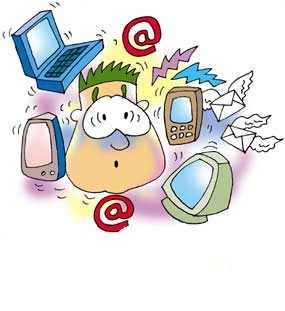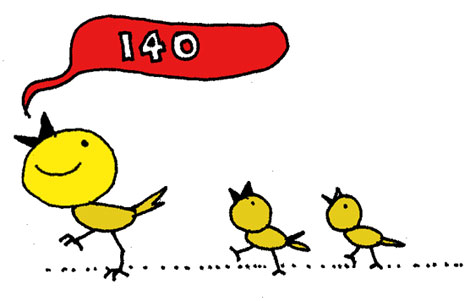Continuing with the series of etiquettes in communication, language expert Preeti Shirodkar tells us about what we need to keep in mind while communicating in writing.
While written communication affords greater flexibility, since it can be edited and both composed and read at leisure or at one's pace, a great deal of care needs to be taken, in order to ensure its effectiveness; as it can serve as a point of reference, which one can turn to time and again, thus creating a more lasting impact.
Focus on formats
Image: Be aware of the various letter-writing formatsThe various formal writing forms have a pre determined, universally accepted format that accompanies them. This format, which is largely based on universal writing conventions, serves to facilitate communication, by eliminating miscommunication that may result through random writing styles.
Moreover, these formats are likely to change with time, due to the evolving nature of communication and/or technology.
For example, the semi block format that was earlier the most relied upon format for letter writing has now given way to the full block format, after the wide spread use of computers.
Structuring of the content
Image: Make sure you structure the content of what you're writing wellIntroduction, Body and Conclusion: While writing one should ensure that the content is well organised, with the overview/basic details comprising the introduction; all major points with their explanation and exemplification constituting the body (preferably divided into a separate paragraph each for every new point, with titles and subtitles, if necessary) and drawing together of the argument/charting out future possibilities, in the conclusion.
Ensuring connectivity
Image: Lack of connectivity can often lead to communication gaps, misinterpretation and doubtsThe content that comprises a piece of writing should reflect fluency and should be connected through a logical flow of thought, in order to prevent misinterpretation and catch the attention of the reader.
Moreover, care should be taken to ensure that the flow is not brought about through a forced/deliberate use of connectives (like therefore, also, but etc.), as this make the piece extremely uninteresting and artificial.
Tempering the content as per the level of formality
Image: Tone your communication bearing in mind how formal or casual your relationship is with the receiverThe level of formality that is shared between the sender and receiver should define the use of salutations, the vocabulary, the content, the format and even the medium.
Though not integral to the matter communicated, this courtesy helps in creating a balanced impression about the communicator.
Steering clear of short forms
Image: Life in 140 characters is ok for twitter, not otherwisePeople may not be aware of the meaning of various short forms and may thus find it difficult to interpret them. Moreover, short forms can at time be culture specific or even organisation specific and may thus unnecessarily complicate the communication.
Importance of grammar, spellings and punctuation:
Image: Bad grammar and spellings can land you in trouble even todayImproper grammar can at worst cause miscommunication and at least result in unwarranted humour and should be thus avoided. So too, spellings can create the same effect or can even reflect a careless attitude on part of the sender. Often people resort to a mixed use of British and American spellings, which again affects the impact that the communication creates (an issue which can be avoided by setting the language of the laptop/computer to English (UK) or English (US) as desired).
Finally, effective use of punctuations facilitates reading and interpretation and can in rare cases even prevent a completely different meaning, which can result in miscommunication, from evolving.
Sensitivity to the audience
Image: Don't take your audience for granted. Make sure they understand what you're talking aboutOne needs to be aware of and sensitive to the emotions need and nature of the audience in choosing the vocabulary, content, illustrations, formats and medium of communication, as a discomfort in the audience would hamper rather than facilitate communication.
Importance of creativity
Image: Make sure your commununication doesn't end up in a pile of garbage. Be a little creativeIn order to hold the readers' attention one needs to infuse creativity to break the tedium of writing and prevent monotony from creeping in.
This is especially true in the case of all detailed writing that seeks to hold the readers' attention. Creativity however does not involve only humour or being insensitive to the reader(s) and defines the 'style' of the communicator.
Avoiding plagiarism
Image: Don't plagiarise. You never know how the past can catch up with youAny source from which matter has been taken, whether verbatim or as a summary (in the latter case if the idea is drawn upon or the matter is large), should be acknowledged by providing references or quotes either in the body of the text or at the end through footnotes, a reference list or bibliographical details.
Avoiding opinionated points of view
Image: Think twice before you shoot off your mouthLike in oral communication, the following aspects form an important part of the etiquettes in written communication. (Though a brief reference follows, for a detailed explanation, refer to my article on common etiquettes in oral communication).
Avoiding categorical/opinionated points of view: Paying attention to categorical/opinionated points of view in the context of written communication becomes in fact all the more crucial, as unlike in oral communication, where a reference to them might prove transitory/may not be noticed, in written communication, it serves as a recorded statement that can be referred to time and again, resulting in greater alienation of the audience.
Avoiding excessive use of jargon
Image: Excessive use of jargon hasn't taken anyone anywhereExcessive use of jargon can put off a reader, who may not read further, as, unlike a captive audience, the choice of whether to participate in the communication rests considerably with the reader.
On the flip side, it can be argued that in written communication, dealing with jargon may be simpler, as people have a dictionary/reference point, which they could use to decode the information or they could peruse it at their own pace.
This however does not mean you can overlook the negative impact that excessive jargon can cause.
Awareness of the audience/medium
Image: Making points that are going over your audiences' heads... be aware of who you're speaking toThe medium needs to be chosen, as per its suitability to the audience/content; while the content would need tempering as per the medium/audience. For example, while an elaborate message can be sent via a letter or an email, an sms, the same content may have to be heavily edited.
Like all effective communication, good writing could be said to occur when the gap between 'what one desires to say and what one is constrained to mean' is negligible or almost non-existent; and though the scope to edit, rewrite and re-read may add a certain degree of effectiveness to writing, the words of Nathaniel Hawthorne effectively echo the real challenge involved in the task 'Easy reading is damned hard writing'.














Comment
article